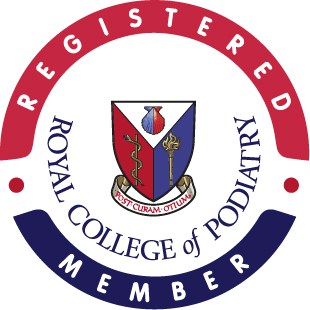An ingrown toenail certainly isn’t ideal, but it can happen to anyone. And when you’re dealing with this type of foot concern — think of your toenail growing down into the skin of the toe instead of straight out and above the skin—it’s imperative to treat it at once to avoid severe infection.
Although ingrown toenails are in most cases not serious, they can be very painful if not taken care of correctly. The toenail can get trapped in the skin fold and become embedded, causing redness, inflammation and acute pain.
You can get ingrown toenails on any toe on your foot, however, it’s a condition that’s most frequently found on the big toe.
Ingrown toenails are easily noticeable as your skin may actually grow over the toenail and cover it.
Other symptoms you may also experience include:
- Discomfort and tenderness in your toe and along the nail edges, where the nail is growing into the soft flesh.
- Swollen, red skin on one side of the affected toenail
- The surrounding skin may feel hard or tight to the touch.
- If slightly infected, a bit of drainage of a yellowish fluid (pus) seeping from the skin where the nail meets it.
Luckily for all of us, ingrown toenails is a condition relatively easy to solve and with the right treatment you can find relief in no time.
So, how can you get rid of ingrown toenails?
Although there are a few ways you can use to relieve the symptoms at home, it’s highly advisable that you seek guidance from your podiatrist to prevent further complications.
If the pain is very mild or while you wait for your visit to your podiatrist, I recommend that you soak your foot in warm salty water several times a day. This helps soften the skin around the toe and reduce any inflammation.
Gently massaging the foot and toenail can also improve the blood flow to the area, which may help alleviate pain while speeding the healing process.
You can also apply an antiseptic ointment to help induce infection risk or take some paracetamol or ibuprofen to lessen discomfort. And if the toenail is showing signs of infection, you may need a course of antibiotics from your GP or podiatrist.
Whatever you do, do not try to play bathroom surgeon at home as this may worsen the condition. The most effective way to treat ingrown toenails is through medical care. This is why, regardless of the severity of your pain, you should schedule an appointment to see your podiatrist right away.
Once at the clinic, there are different ways to treat an ingrown toenail, depending on the gravity of the condition.
If your pain is bearable, we will carry out a simple procedure where we remove the offending spike of nail and cover the minor wound with an antiseptic dressing. If the toe is too painful to touch, we would need to administer a local anaesthetic before the procedure. This is only the truly painful part as once the toe and the area around it get numb, you should feel no further discomfort and be more at ease.
If you suffer from an involuted nail — this is when the transverse shape of the nail curls from one side to the other — or have a toenail that has grown significantly under the skin, we would perform nail surgery. This is also recommended for patients for whom ingrown toenails is a recurring problem.
Nail surgery is a minor surgical procedure by which we remove either all of, or part of the painful toenail. This is known as total or partial nail avulsion. When treating involuted nails, we separate the sides of the nail from the nail bed, cut it down to the bottom and then we remove it. We then apply a chemical called Phenol to the root of the nail (matrix) to sear it and prevent the nail from re-growing and causing further pain. Otherwise, predictably the nail will re-grow in the same way and produce the same problem. The same process is applied when removing the whole nail. The success rate of nail surgery is 95% but there is a 5% chance of regrowth.
If you are particularly prone to ingrowing toenails or get them as a result of other underlying medical problems such as poor gait, we would always recommend nail surgery to avoid developing other complications.
The recovery time frame from ingrown toenail surgery can range from four to six weeks, depending on the severity. After your procedure we will give instructions on how to best care for your toe until it heals.
You would be advised to wear loose footwear as your toe will be dressed and bandaged, and you won’t be able to do some types of activity, such as running. You may also need to take some painkillers, such as Paracetamol to alleviate any minor discomfort.
Understandably, the idea of having your foot numbed and nail pulled out probably doesn’t sound too good. It’s always good to know though, that we can help you fix the painful problem relatively quickly and with little downtime. Get in touch to find out more on how we can help you get rid of ingrown toenails for good.







